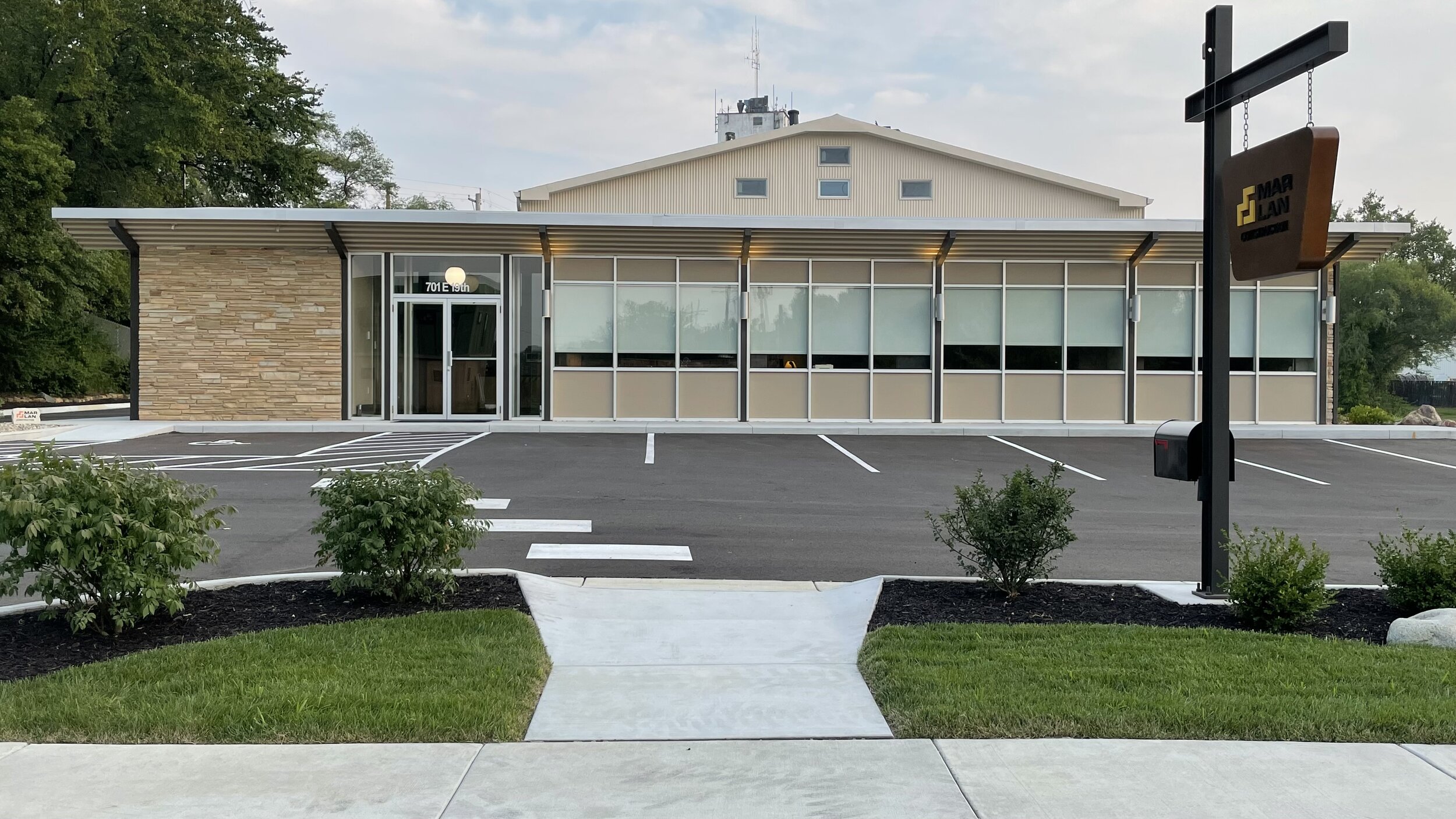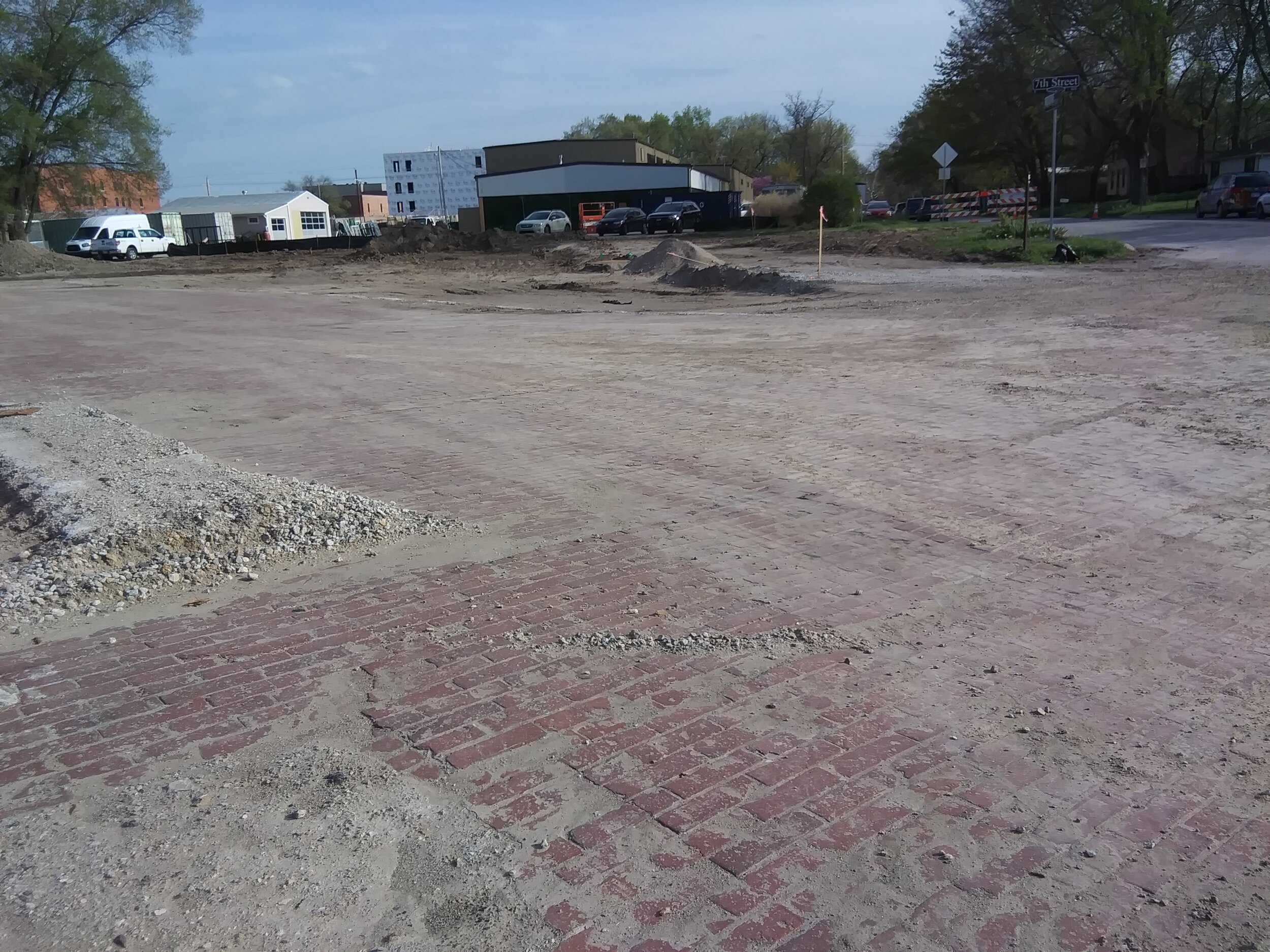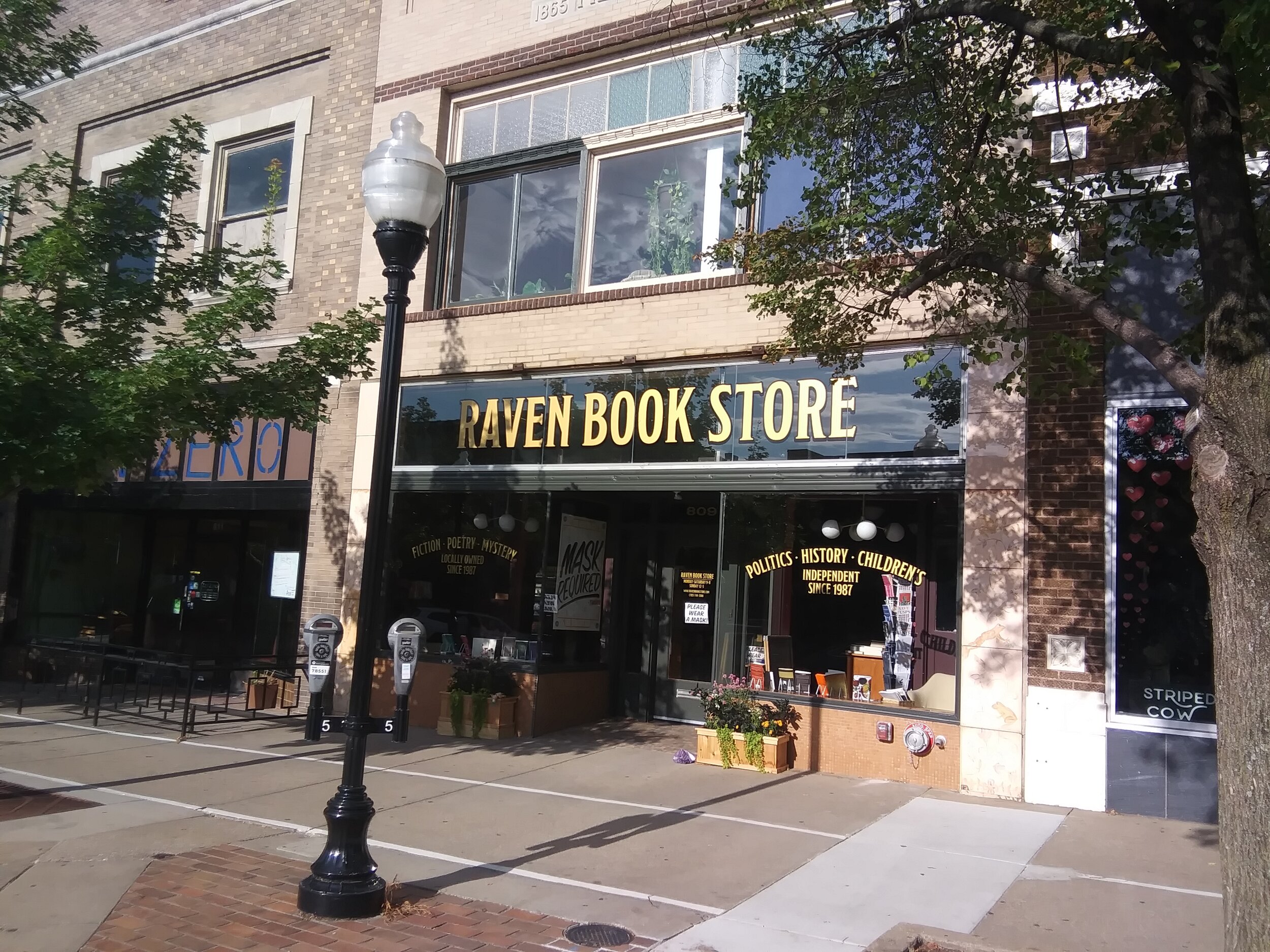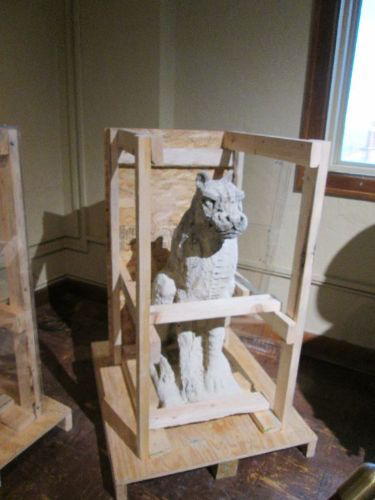Mar Lan/Zimmerman Steel Building, 701 E. 19th Street
/The Zimmerman Steel Building is looking great under new Mar Lan ownership. (All photos courtesy of Hernly Associates.)
The old Zimmerman Steel Building, a much-loved local midcentury-modern commercial structure that sits just east of the Burroughs Creek Trail at 701 E. 19th Street, is looking mighty fine these days. And there’s a good reason why: its new owner/occupant is cut from the same fabric as Lee Zimmerman himself, who acted as his own general contractor to build the structure circa 1960 to house his company. Now this iconic structure is owned by Mar Lan Construction, a commercial general contracting, design-build and construction management firm, and just as Zimmerman built it, Mar Lan has now rehabilitated it.
The folded-plate steel frame of the office, designed by Lee Zimmerman.
In 53 years of business at the 19th Street location, Zimmerman Steel fabricated and sold structural steel and architectural metal components for many prominent buildings in Lawrence, on the KU campus, and throughout northeast Kansas. Many of the mid-century modern buildings in Lawrence were built with metal pieces purchased at Zimmerman Steel.
The Zimmerman Steel Building was built in two phases as Lee Zimmerman moved his operation from 1832 Massachusetts in the mid-20th century. The shop space came first, in 1959, and Zimmerman designed and fabricated the steel frame himself. In 1963, Zimmerman added office space to the north that was designed in the mid-century modern style by the architectural firm Robertson & Ericson. Zimmerman enjoyed this modern style, as he had built his family home at 200 Nebraska — now listed with LPA help on the Lawrence Register of Historic Places — in the same style in 1955.
The front of the office building.
The current occupant of the building, Mar Lan, was founded in Lawrence in 1999 by Gale Lantis, Brian Lantis and Kevin Markley (James Allen was added later as a fourth partner), each a principal in the company. When Mar Lan began looking for centralized space, it had an office at 1008 New Hampshire and storage and shop spaces in two other locations.
“We wanted something unique and different,” Markley says, “and we had always admired the Zimmerman Building back to the days when we were customers of Zimmerman Steel.” But when they inquired about a possible sale or lease from what was then the property’s third owner, they were told no. About two years later though, that owner reached out to see if they still had interest in a purchase, and Mar Lan leapt at the opportunity.
Evaluating the site, they could see that a lot of updating was necessary, but Markley remembers it was important to “keep the original concept and layout sacred…the spaces seemed like they were made for our programming.” They contracted with Hernly Associates to write a nomination to the Kansas Register of Historic Places and were approved for listing in February. Listing on the National Register of Historic Places followed. This allowed Mar Lan to take advantage of the federal and state tax credit programs for rehabilitation projects for listed historic properties.
The project involved installation of new mechanical, electrical and plumbing systems, new bathrooms and all new finishes. The office roof was replaced, new insulation was added and the storefront windows got new insulated panels at top and bottom and new interior storm windows. We had to ask Stan Hernly about the work scope, because a lot of it isn’t immediately evident when looking at the building today. He remarked that “I like when people can’t tell by looking how much work has been done on a historic rehabilitation project—it means the preservation architect has done a good job!”
One thing did need a complete overhaul, however. “The site was a real mess,” Markley says. “Landscaping was a big thing for Lee Zimmerman, so we thought it was paramount that we pay careful attention on how this was managed.” From curb to gutter to landscaping, it was a complete site makeover. Mar Lan staff designed and installed this aspect of the work, and the personal pride they took in it is evident.
Mar Lan never left Lawrence, but with their cool new digs, LPA can honestly say, welcome home Mar Lan! And thanks to you and Hernly Associates, welcome back to the Zimmerman Steel Building!










































